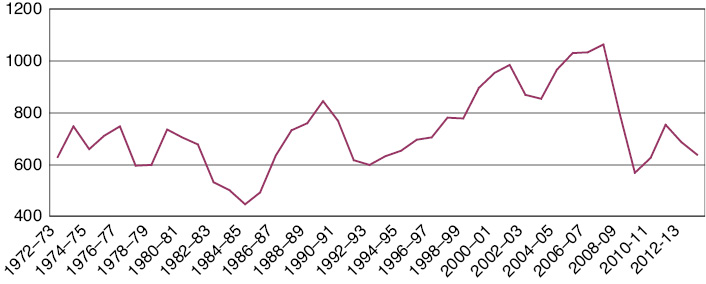No, my esteemed student, you are not going to be a history professor. It isn't going to happen .... you are not going to win the lottery, you are not going to be struck by a meteorite, you are not going to be a professor. All of these things will happen to someone, somewhere, but none of them will happen to you.
The post went viral by the modest standards of this blog, with links from Reddit and MetaFilter and the Atlantic Monthly and eventually racked up over 100,000 page views. It still gets about 1200 views a month, and at least once a month I get an email from some plaintive undergrad, still trying to hold onto some thread of the dream, asking if my advice still stands.
Alas, it does, and this report from the American Historical Association confirms it. The number of academic history jobs has dropped again this year, for the second year in a row. "This decline is especially disconcerting when we consider that the overall economy has been improving and the US jobless rate declining. It raises the possibility that this downturn in academic positions for historians is not entirely attributable to the recession, but may be with us for some time." Here is the data in a chart:
 |
| Positions Advertised with the AHA |
So no, my hopeful correspondents, you are still not going to be a professor. The good news is that there are jobs for people with historical training. You need to play all of your cards exactly right, and you need to be geographically flexible, but it can be done. Check out this great guest post by my recent MA student Lee Nilsson, on how he parlayed an MA in history into jobs at the Library of Congress and now the Department of State. There is life outside the classroom.






